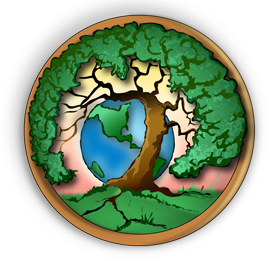 By Michael Pilarski. December 10, 2022
By Michael Pilarski. December 10, 2022
Here are a few notes on Planetary Regeneration Solutions I made for my presentation at the Earth Repair Rally in Port Townsend, Washington state, December 10. They reflect some of my take-away thoughts from the Global Earth Repair Summit.
Rehydrate landscapes. Landscapes that are dehydrated from human interventions can be rehydrated by revegetation and water retention structures. This is especially important in the dryer half of the planet. Rehydrating the landscape also stops floods and stores the water for dry periods. The soil and aquifers hold the water, not big dams. Floods cost trillions of dollars in damage every year now. Pakistan is a recent example. The US Midwest a few years ago. Flash floods are a feature of many dry regions. Each flood is a wasted opportunity to rehydrate the land. There are many interventions to “slow, spread and sink” runoff. A permaculture term coined by Brock Dolman.
The Nabatean civilization in the Negev Desert had runoff agriculture systems that were designed to capture and utilize up to 100-year flood events.
See my video: How to Retain Water in the Landscape.
Here is a quote from a new business’s website my friend Colin Sternagel is working on:
“Our goal is to turn a watershed into a watercatch. We want to hold water on the landscape to help mitigate drought, stabilize stream flows, enlarge natural fire breaks and expand riparian habitat for biodiversity and local-use product. We do this through:
-
Low-tech stream restoration (e.g. holding water on the landscape, creating stream structures and habitat)
-
Expanding riparian zone areas by increasing the biodiversity of plantings that have more human value (food, medicine, technology)
-
Water catchment systems for the home
-
Water holding earthworks on the land”
Rehydrating the atmosphere. Rehydrating the landscapes leads to rehydrating the atmosphere. More transpiration from plants. This leads to more rivers in the sky. More dew, more hoarfrost, more humidity. Water cycles more times. Rainfall on land from ocean evaporation is a major source of rainfall. Michael Kravcik calls this the “large water cycle”. Some of this water is sent aloft again by evapotranspiration. Kravcik calls this the “small water cycle”. Amazon water can cycle 7 times further into the continent. And then up to North America and eventually Europe. The Amazon is a huge water pump we can’t afford to lose. Rob de Laet is a principal speaker on the Amazon water topic.
Bottom line, we can make the planet wetter. Particularly important in the large part of the Earth’s surface that gets less that 25 inches of precipitation a year. Many parts of the world have been drying up. We can reverse desertification.
Regreening the land. Increasing plant cover. A vegetated surface is cooler than bare earth. Bare land sends up big columns of heated air. Harder for rain to form. Heats up the planet. Annual agriculture crops are a big contributor to this drying out. Urban heat islands are another. There are lots of degraded lands in the world with a low plant cover. Revegetation draws down carbon and cools the climate, both desireable outcomes. The biggest, quickest greening up could happen if the 500 million, small-holder farmers of the world switched to more perennial crops, agroforestry and permaculture. This is in the process of happening in Africa and India. This is also where revegetation with ecosystem restoration comes in. Walter Jehne is one of the best people on greening the landscape. Watch some of his stuff.
See my video on plant establishment techniques, from extensive and low-cost methods to intensive and high-cost. How To Establish Plants in the landscape.
Soil Sponge. This is part of water retention in the landscape. The soils should be our biggest water reservoir. There are lots of ways to increase soil water-holding capacity. More microbial life, aeration with keyline plows, plant roots and soil macro-fauna and micro-fauna. There are many people working on soil improvement techniques.
Ocean restoration. Oceans offer significant opportunities for carbon drawdown. We need healthy ocean ecosystems. Mangrove forests and kelp forests sequester like 5 times as much carbon per annum as rainforests. Similarly sea grass and salt-water marshes. The edge/ecotones of land and sea are especially important for ocean health, fish stock nurseries and carbon sinks. Land revegetation and water retention will greatly lessen smothering silt from erosion and pollutants. The role of plankton in planetary climate is big and whales are too. Whale poo and ocean water mixing in pre-whaling days were big components of a healthy Earth. Whale restoration is needed. Ocean restoration knowledge is growing by leaps and bounds.
Food Production. Earth Repair is not only about ecosystem restoration. All these things can add up to a much larger food production and more nutritious food. More food sovereignty and self-reliance. Local food chains. Less food transportation. Localization instead of globalization. Healthier oceans can mean increasing fish catch instead of our ever-shrinking catch due to overfishing, ocean pollution, and other human insults to oceans.
Spiritual and Indigenous Approach. Respect and work with nature. All nature is alive and deserves our respect. Nature communication and co-creation. Heart and mind in balance. Doing earth-healing work helps heal the humans involved. It is similar to “horticultural therapy” which has been well studied and used. Healing of nature and healing of humanity need to happen hand in hand.







